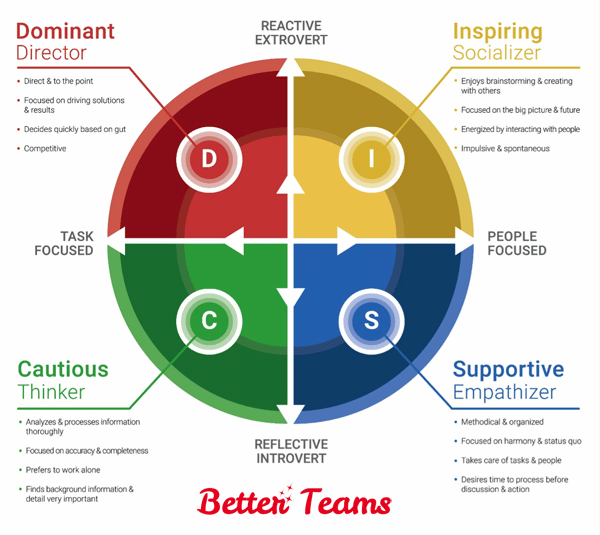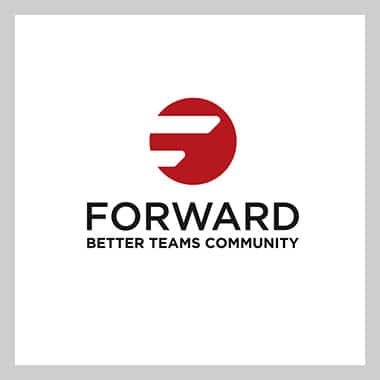Looking for ways to get buy-in for your ideas? It may be as simple as making minor adjustments in how you communicate with your team members.
Most of us tend to follow the Golden Rule: Do unto others as you would have them do unto you. However, there is a better rule when it comes to communication. Instead of communicating how we prefer to be communicated with, take the time to figure out how others prefer and adjust accordingly.
When we adapt our behavior (even in little ways), other people are often much more responsive. This means we are more likely to get buy-in for our ideas. It’s all about your approach.
I’m going to walk you through a simple way to figure out the best way to get buy-in from each team member using a simple version of William Marston’s DISC model. In this model, there are four dominant communication styles. Once you have an understanding of each style, it’s easy to apply this new information.
Follow these three steps to gain insight in the best way to approach each team member.
Step 1: To determine a team member’s dominant communication style, answer these two questions:
Is this person a REACTIVE EXTROVERT or a REFLECTIVE INTROVERT?REACTIVE EXTROVERT
- Quick to respond and share ideas
- Tends to think “out loud”
REFLECTIVE INTROVERT
- Pause to think before responding and sharing ideas
- Prefer to think independently before discussing with others
Is this person more TASK FOCUSED or PEOPLE FOCUSED?
TASK FOCUSED
- Results are more important than relationships
- Biased towards the facts
PEOPLE FOCUSED
- Relationships are more important than results
- Biased towards intuition
Step 2: Combine your two answers in Step 1 and use the chart below to determine their dominant style (one of the four quadrants). Keep in mind, we’re all blends of the styles and we can show up differently when we are stressed.

Step 3: Adjust your approach to align with their communication preferences.
Below are some general tips on how to approach each style in the chart below to increase your chances for getting buy-in to your ideas.
DOMINANT DIRECTOR
- Skip the small talk, dive right into business
- Show them how they will benefit from your idea
- Be brief, don’t ask a lot of detailed questions
- Be decisive and confident
- Be logical and thick-skinned
INSPIRING SOCIALIZER
- Engage them by asking them about their ideas
- Be quiet, and let them talk (they love to talk)
- Show personal interest in them
- Be energetic and friendly
- Have fun while you work, make it enjoyable
SUPPORTIVE EMPATHIZER
- Share your idea when there is time for them to process it
- Demonstrate that you value the relationship
- Be patient and calm
- Be aware that change may stress them
- Allow them time to think before you expect a response
CAUTIOUS THINKER
- Provide evidence to support your thoughts
- Allow them time to think independently before responding
- Be detailed and thorough
- Don’t interrupt them when they are working
- Provide detailed processes and procedures
While the exercise above can get you started, the best way to understand your team member’s communication styles is to talk with them about it. Learning about and adapting to each other’s preferences can significantly boost the performance and satisfaction of your team.
If you would like a fun, self-guided team building activity that reveals deeper understanding of these styles, check out Team Building In-A-Box. This activity guides your team through meaningful conversations about communication styles in a safe and positive way.
When teams talk about how they want to work together everyone benefits. Teams who adjust to each other get better results and enjoy working together more than teams who don’t. I challenge you to proactively think about your approach to communication the next time you are trying to convey an important idea to your team.
About the Author: Leigh Ann Rodgers, Founder of Better Teams and Forward, is an IAF Certified Professional Facilitator with 20 years of experience in the human development field. Leigh Ann is a skilled meeting facilitator, trainer, and coach working across the globe to help leaders cultivate teams that are happy and high-performing.
Learn. Share. Practice. Move FORWARD. Join the Better Teams community, FORWARD, to network and grow with some of the most experienced professionals in the field of team building and facilitation. LEARN MORE

